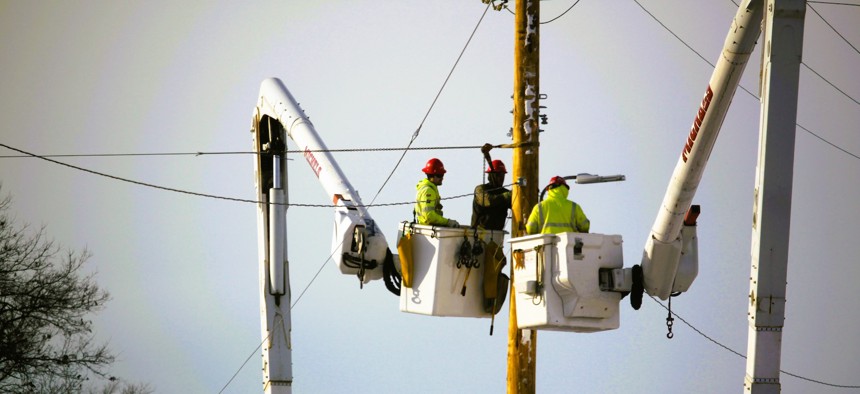
The Army is facing a future where its posts are not safe from foreign attacks, where a strike on deployed troops can be followed up by a cyber attack on an installation, hamstringing the service’s ability to send in back-up.
So the service is looking to turn its small cities into energy-independent islands, capable of keeping the lights on and the airfields or railheads running, no matter what.
“Our adversaries are watching, they’re probing, and they’re preparing to disrupt our ability to project power,” Lt. Gen. David Wilson, the service’s top military advisor on installations, said Thursday at an AUSA event. “This is why our installations must be ready to operate under these contested conditions.”
There’s also the threat of power loss from extreme weather to protect against.
“I really believe that every installation must be an island in a contested environment, period,” Brandon Cockrell, the Army’s top environment and sustainability civilian, told reporters Thursday. “So what we’re doing across the board is, No. 1, the goal is a microgrid at every installation, which means the ability to direct the energy and the ability to generate the energy.”
A microgrid is a system independent from the local municipal system, something that uses solar panels or natural gas to generate power and then distribute it.
There are 32 operational in the Army so far, Cockrell said, with 27 under construction and 58 more in the design phase. The service’s energy plan calls for all of its critical facilities to be 99.99-percent energy reliable by 2030, he added.
The Army also has been doing Black Start exercises to prepare for catastrophic outages. The congressionally mandated tests knock out power for eight hours and force the post to get as many facilities as possible up and running on generators.
It’s good practice, as shown by the post responses to Hurricane Helene in the southeastern U.S. last year, the Army’s operations director for installations said at the event.
“And we had two installations that had previously conducted successful Black Start exercises, and shortly after power shut off—they were up within an hour,” he said. “The other installation that had not done their Black Start exercise, it was days.”
While Defense Secretary Pete Hegseth in March ordered the Defense Department to cease any work on climate change, he did carve out an exception for the services to continue “assessing weather-related impacts on operations, mitigating weather-related risks (or) conducting environmental assessments,” according to a memo.
In practice, the new administration’s de-emphasis on renewable energy and man-made climate issues has allowed the service to look at multiple sources in its quest for energy reliability, said David Dentino, an official in the Army’s installations, energy and environment office.
The Biden administration emphasized clean energy like solar and wind, but Dentino said the Trump administration’s policies will allow for a coal-fired generator if that was found to be “the most effective system.”
“So now, you know, it just really opens up the types of equipment and things like that, that we can procure and make sure that we get the most reliable, the most effective—not just focused on a single power source,” he said.
The post The Army wants its installations to be energy islands appeared first on Defense One.



















